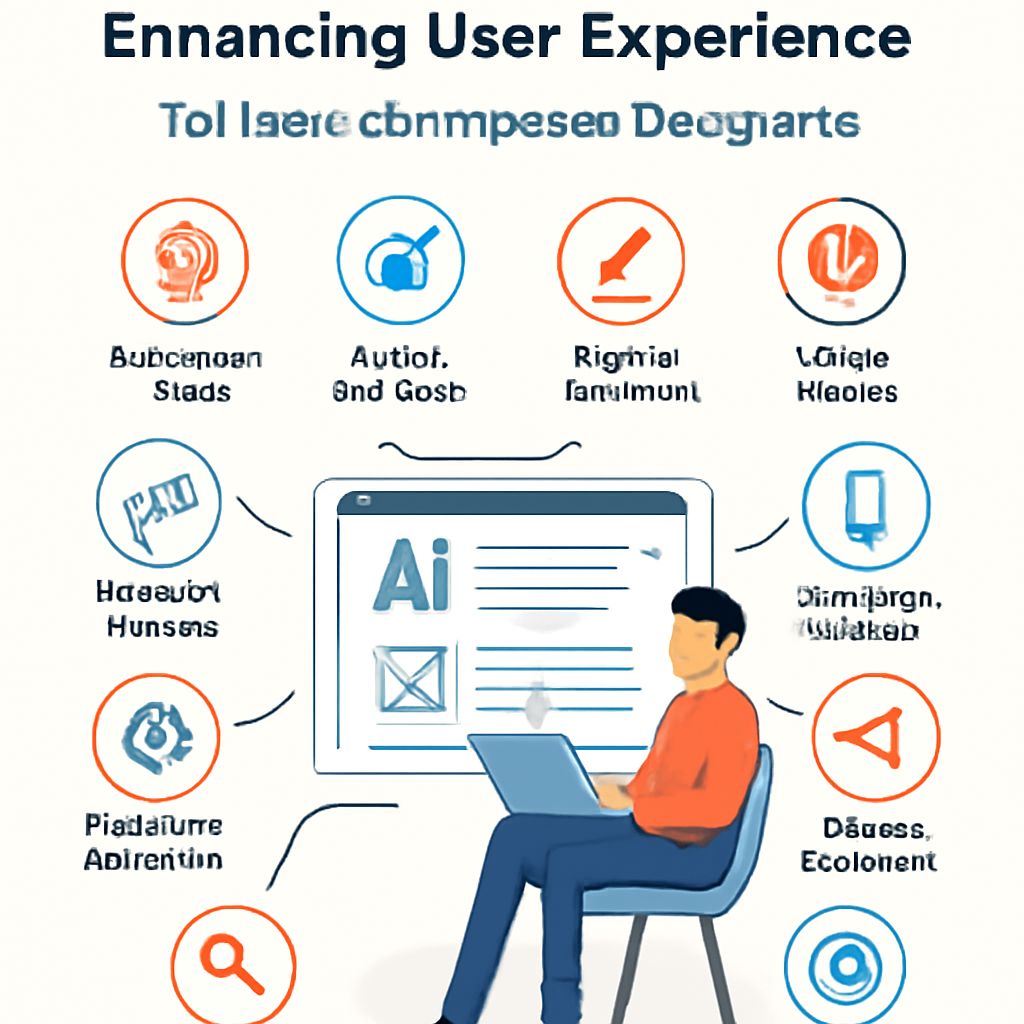Enhancing User Experience: 10 Essential Tips for Designers
User experience (UX) design is a crucial aspect of creating successful digital products. It determines how users interact with a product or service and greatly impacts user satisfaction and loyalty. As designers, understanding how to enhance user experience can lead to better user engagement, increased conversion rates, and a stronger brand reputation. Here are ten essential tips for designers looking to improve user experience in their projects.
1. Understand Your Users
The first step in enhancing user experience is to understand your users. Conducting user research can provide valuable insights into user behaviors, preferences, and pain points. Utilize surveys, interviews, and usability testing to gather data.
- Identify your target audience
- Analyze user behaviors
- Gather feedback to understand user needs
2. Create User Personas
User personas are fictional representations of your target users based on real user data. They help designers empathize with users and keep their needs in mind throughout the design process.
- Include demographic information
- Focus on user goals and motivations
- Use personas to guide design decisions
3. Prioritize Usability
Usability is a key component of user experience. Ensure that your designs are intuitive and easy to navigate. A well-structured layout with clear calls to action can significantly enhance usability.
- Conduct usability testing regularly
- Implement clear navigation
- Ensure content is easily accessible
4. Utilize Consistent Design Elements
Consistency in design helps users understand how to interact with a product. Consistent color schemes, fonts, and button styles create a cohesive look and feel.
| Design Element | Tip |
|---|---|
| Color Scheme | Use a limited color palette to avoid overwhelming users. |
| Typography | Select a few fonts and sizes for harmony. |
| Button Styles | Use similar styles for all buttons to indicate interactivity. |
5. Implement Responsive Design
With the increasing use of mobile devices, responsive design is crucial. Ensure your designs adapt seamlessly to different screen sizes and orientations.
- Test on various devices
- Use flexible grid layouts
- Optimize images for faster loading
6. Focus on Accessibility
Designing for accessibility ensures that your product is usable by everyone, including those with disabilities. This promotes inclusivity and can broaden your user base.
- Use alt text for images
- Provide captioning for videos
- Ensure sufficient color contrast
7. Streamline Content
Excessive content can overwhelm users. Streamlining content involves keeping it concise and relevant, ensuring that users can easily grasp the key messages.
- Use bullet points for readability
- Break up text with headings and subheadings
- Eliminate unnecessary jargon
8. Incorporate Visual Hierarchy
Visual hierarchy helps users navigate your design by establishing a clear order of information. Use size, color, and placement to guide users’ attention.
- Make important information larger or bolder
- Use contrasting colors for calls to action
- Position key elements strategically within the layout
9. Provide Feedback
Users appreciate feedback when they interact with a product. Whether they submit a form or click a button, providing feedback reassures them that the action has been acknowledged.
- Use loading indicators for long processes
- Display confirmation messages for completed actions
- Utilize animation to indicate changes
10. Continually Test and Iterate
The final tip for enhancing user experience is to continually test and iterate on your designs. User feedback and data analytics can reveal areas for improvement.
- Conduct A/B testing to compare design variations
- Analyze user behavior through heatmaps
- Adapt to changing user needs over time
Conclusion
Enhancing user experience is not a one-time task but a continuous process. By keeping the user at the center of your design decisions and implementing these ten essential tips, you can create engaging and effective designs that resonate with your audience. Remember that great user experience leads to happy users, which ultimately contributes to the success of your product.
FAQ
What are the essential tips for enhancing user experience in design?
Some essential tips include understanding your target audience, ensuring intuitive navigation, maintaining consistency in design elements, utilizing whitespace effectively, and conducting usability testing.
How does understanding the target audience improve user experience?
Understanding the target audience helps designers create tailored experiences that meet users’ needs, preferences, and behaviors, leading to higher satisfaction and engagement.
Why is intuitive navigation important in design?
Intuitive navigation allows users to find information quickly and easily, reducing frustration and improving overall satisfaction with the digital product.
What role does whitespace play in user experience design?
Whitespace improves readability and comprehension by allowing users to focus on content without feeling overwhelmed, thus enhancing the overall user experience.
How can usability testing benefit designers?
Usability testing provides valuable feedback from real users, helping designers identify pain points and areas for improvement, ultimately leading to a more user-friendly product.
What is the significance of maintaining consistency in design elements?
Consistency in design elements helps users build familiarity with the interface, making it easier for them to navigate and interact with the product, which enhances their overall experience.




